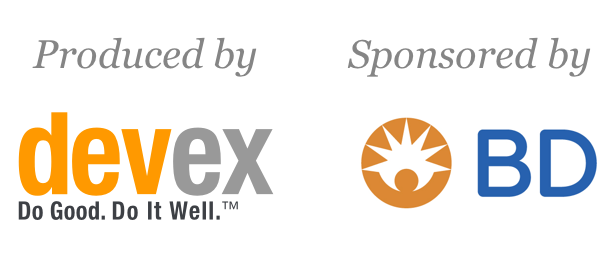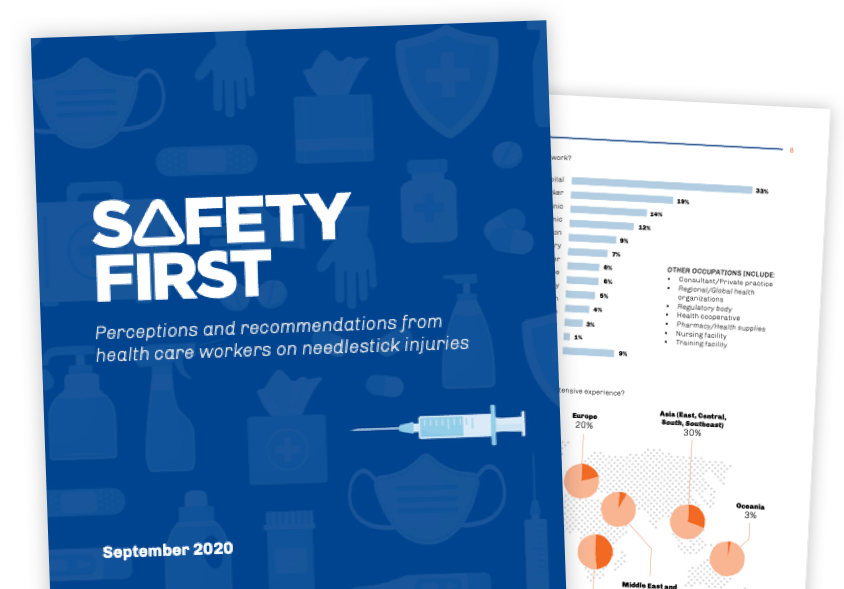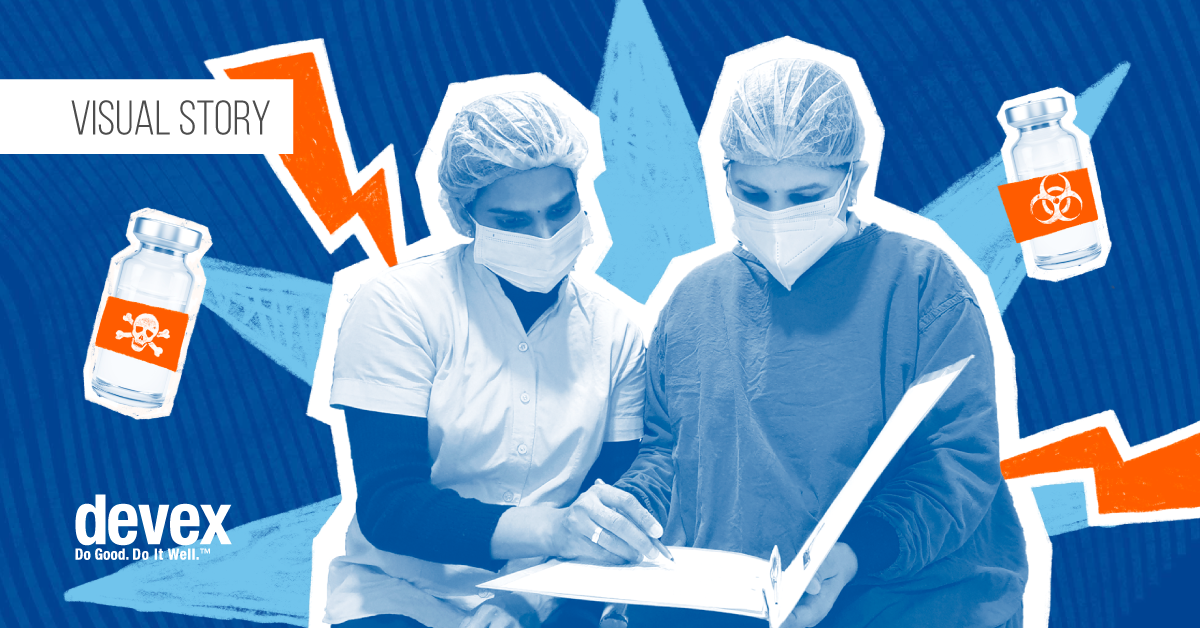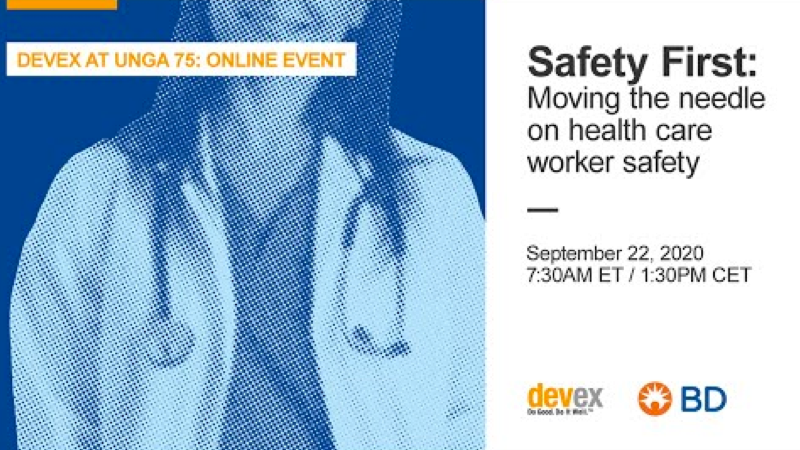Meet the champions who are moving the needle on patient and Health Care Worker Safety
The four health care workers above have each experienced a needlestick injury. Driven by their personal experiences with stigma and underreporting, and their awareness of gaps in data, funding, and policy, these champions are now fighting for action and accountability — both within their own health systems and across international borders.
According to World Health Organization estimates, approximately 3 million health care workers globally experience bloodborne pathogen exposure due to needlestick injuries every year. Yet needlestick injuries remain a starkly underrecognized global issue.
Most injuries happen in the patient and exam rooms, the emergency department, and intensive care units, where health care workers are under stress to perform procedures quickly. This can lead to underreporting of injuries because there is more pressure to pay attention to the care of the patient rather than self-care of the health care worker. Whether due to a lack of training, an absence of safety protocols, or limited access to post-exposure care, these injuries pose substantial risk of infection. It is estimated that such exposures result in thousands of new infections each year, with more than 90% in low- and middle-income countries.
Additionally, reports of injection device reuse resulting in disease outbreaks is still a global problem. According to the U.S. Centers for Disease Control and Prevention, four of the largest outbreaks of hepatitis in the United States were traced back to health care workers in doctor’s offices reusing needles and employing other unsafe procedures. There are similar reports in low- and middle-income countries, with frequent outbreaks of HIV, hepatitis B, and C.
How is the global health community working to address these issues? Safety First explores the challenges at the heart of needlestick and sharps safety and highlights promising efforts to ensure patient and health care worker safety in hospitals and clinics around the world.
Join the conversation using #HCWSafety and #PatientSafety.

Produced by
Devex
Devex is the media platform for the global development community. A social enterprise, we connect and inform over one million development, health, humanitarian, and sustainability professionals through news, business intelligence, and funding & career opportunities so you can do more good for more people.
Sponsored by
BD
BD is a medical technology company that serves health care institutions, life science researchers, clinical laboratories, industry and the general public. BD manufactures and sells a broad range of medical supplies, devices, laboratory equipment and diagnostic products. BD is headquartered in the United States and has offices in more than 50 countries worldwide.






